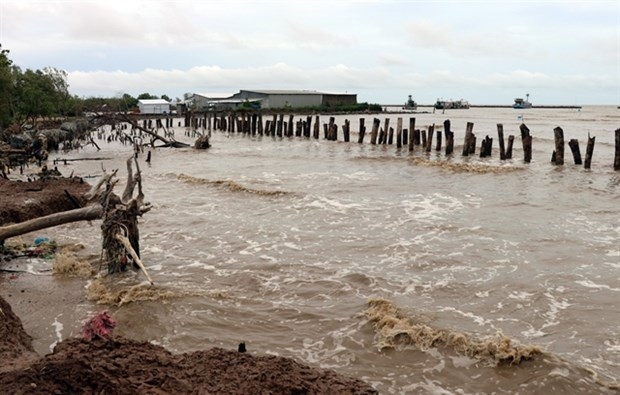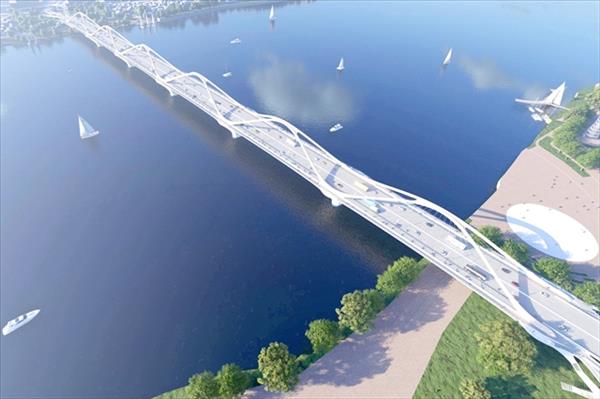Ky Quang Vinh, former head of the office for climate change issues in Can Tho city, told the Vietnam News Agency that over the last two weeks, water levels on the Mekong River have risen just a little and been equal to those in 2019, when they hit record lows.

Farmers reclaim land affected by saltwater intrusion in Cho Lach district,
the Mekong Delta province of Ben Tre (Photo: VNA) |
He noted that water levels recorded on the Mekong River at Cambodia’s Stung Treng and Kratie hydrological monitoring stations will foretell the scale of the flood season in the Delta in Vietnam.
According to the Mekong River Commission, water levels recorded on August 17 were 5.82 metres at the Stung Treng station and 14.11 metres at Kratie, only 0.5 metre and 1.59 metres higher than in 2019, respectively.
Water levels at the two Cambodian stations are still lower and only slightly higher, respectively, than in 2016 and 2019, when severe drought and saltwater intrusion hit the Delta.
In downstream areas of Vietnam, water levels of 1.55 metres were recorded at Tan Chau station on the Tien River, a major tributary of the Mekong River, on August 17; twice as high as those last year (0.83 metre) and roughly equivalent to levels in 2016 (1.61 metres). Levels measured at the Chau Doc station on the Hau River, another tributary, were 1.57 metres, or 0.08 metre higher than in 2016.
These figures indicate a lack of necessary conditions for a flood season, which is important for local agriculture and aquaculture, Vinh said.
Nguyen Huu Thien, an expert on the Mekong Delta’s ecology, noted that rain in the Vientiane and Pakse regions of Laos will decide the scale of flooding in the Delta.
Based on data recorded so far, he said that this year’s floods will come later than the average and are unlikely in August. Whether they come in September or later will depend on if the La Nina weather pattern, which triggers much rain, is in place.
Smaller floods will lead to serious water shortages and saline encroachment in the dry season, and if water levels remain low through mid-October, these two phenomena may happen in March 2021 or so in coastal localities, according to Thien.
The Mekong River basin is currently facing the El Nino-Southern Oscillation (ENSO) weather pattern, which is neither El Nino nor La Nina, he added.
The US Climate Prediction Centre has forecast that there is a 55 percent chance of La Nina taking shape in September, Thien said, and he believes that drought and saltwater intrusion in early 2021 will not be as severe as in the 2020 dry season./.
VNA/VNP

















